Chainsaws typically range from 100-120 decibels (dB), with gas-powered chainsaws averaging between 110-120 dB and electric/battery-operated ones ranging from 90-110 dB. However, larger chainsaws with powerful engines can reach up to 130 dB.
Btw, I’m Samuel Anali and I have 20+ years of experience with chainsaws. It’s SAFE to say that I’ve heard my fair share of chainsaw noise.
That’s why in this article, I’m going to discuss – 👇
- ✅ how loud are chainsaws compared to other sound sources 🔊,
- ✅ can chainsaws cause hearing damage 👂,
- ✅ importance of hearing protection 🎧,
- ✅ how can you measure the noise level of your chainsaw, and many more!
Are you READY??
Let’s get started!
Table of Contents
ToggleHow Loud are Chainsaws?
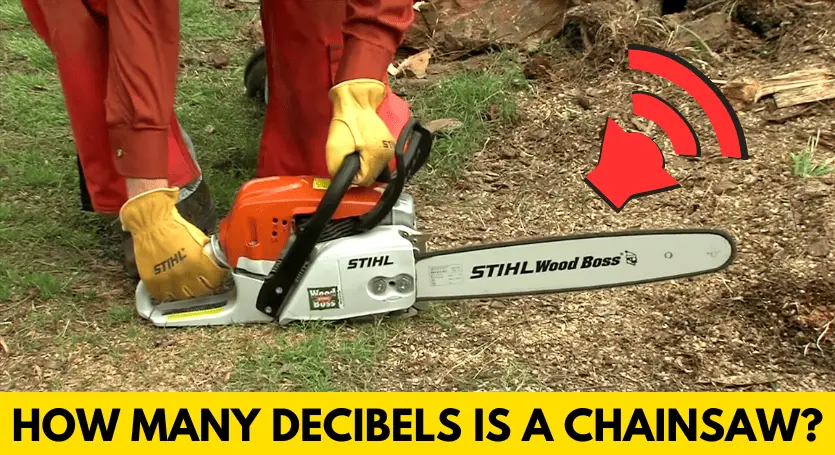
In general, chainsaws average between 100-120 dB. Gas-powered chainsaws typically average between 110 and 120 dB, while electric and battery-operated models tend to fall within the range of 90 to 110 dB.
However, it’s important to note that larger chainsaws equipped with powerful engines can sometimes reach noise levels of up to 130 dB.
(That’s almost as loud as a jet airplane taking off! 🚀)
“But how loud are chainsaws compared to everyday noises?“
For a benchmark, a normal conversation is about 60-70 dB, a vacuum cleaner measures around 70-80 dB, city traffic is approximately 85 dB, and a rock concert can reach up to 110 dB!
Here’s a table that compares common sounds to a chainsaw: 👇
| Everyday Sounds and Noises | Average Decibels |
|---|---|
| Whisper | 20 dB |
| Normal conversation | 60-70 dB |
| City traffic | 80-90 dB |
| Vacuum cleaner | 70-80 dB |
| Lawnmower | 85-90 dB |
| Blender | 85-90 dB |
| Motorcycle | 95-100 dB |
| Rock concert | 100-110 dB |
| Chainsaw | 100-120 dB |
| Firecrackers | 140-160 dB |
As you can see, a chainsaw is really loud compared to everyday noises!
Now, let’s draw a comparison between the chainsaw’s sound and that of other common power tools. 👇
| Power Tools | Average Noise Levels |
|---|---|
| Air Compressor | 70-90 dB |
| Nail Gun | 80-100 dB |
| Belt Sander | 90-100 dB |
| Power Drill | 90-100 dB |
| Circular Saw | 90-110 dB |
| Jigsaw | 95-100 dB |
| Table Saw | 95-105 dB |
| Angle Grinder | 95-110 dB |
| Impact Wrench | 100-110 dB |
| Chainsaw | 100-120 dB |
Can Chainsaws Cause Hearing Loss?
Yes, less than 2 minutes of exposure to the noise level of a chainsaw without proper hearing protection can cause serious hearing damage.
This damage may manifest as difficulties in hearing specific frequencies, the onset of tinnitus (a sensation of ringing or buzzing in the ears), or in severe cases, complete hearing loss.
According to the National Institute for Occupational Safety and Health (NIOSH), exposure to noise should not surpass an average of 85 decibels (dB) over the course of an 8-hour workday.
Going beyond this threshold can pose potential hazards to individuals. And this level of 85 dB is referred to as the Recommended Exposure Limit (REL) by NIOSH.
“What about the rest of us who aren’t stuck in the 9-to-5 grind?” 🤔
In that case, the level is even lower!
The Environmental Protection Agency (EPA) recommends an average exposure limit of 70 decibels (dB) for the general public over a 24-hour period. (Source)
(If you want to break it down into the typical workday, they set the limit at 75 dB over 8 hours!)
But when it comes to a chainsaw, the average noise level is 110 dB, which is well above the recommended exposure limit of 85 dB.
And guess what??
According to the NIOSH 3-dB time-intensity tradeoff, less than 2 minutes of exposure to that level will reach 100% of your daily noise dose. And, repetitive exposure can lead to permanent hearing damage. (Source)
| Noise Level | Maximum Exposure Time |
|---|---|
| 85 dB(A) | 8 hours |
| 88 dB(A) | 4 hours |
| 91 dB(A) | 2 hours |
| 94 dB(A) | 1 hour |
| 97 dB(A) | 30 minutes |
| 100 dB(A) | 15 minutes |
| 103 dB(A) | 7.5 minutes |
| 106 dB(A) | 3.7 minutes |
| 109 dB(A) | 112 seconds |
| 112 dB(A) | 56 seconds |
| 115 dB(A) | 28 seconds |
| 118 dB(A) | 14 seconds |
| 121 dB(A) | 7 seconds |
| 124 dB(A) | 3 seconds |
| 127 dB(A) | 1 seconds |
| >= 130 dB(A) | Less than 1 second (Threshold of pain) |
Long story short, with every 3-dB increase in noise level, your safe exposure time is halved (as illustrated in the table above 👆).
Meet Kevin, who’s currently experiencing hearing impairment as a result of extended exposure to chainsaw noise without adequate protection:

Importance of Hearing Protection While Using a Chainsaw
As you’ve just discovered, using a chainsaw without proper hearing protection can be disastrous. It has the potential to cause permanent hearing damage, which is something no one wants to endure.
But guess what we found out from our recent survey!
Out of the 520 hardcore chainsawers who participated, nearly 20% admitted they don’t wear hearing protection regularly and another 12% never bother to wear it at all! (Can you believe it?)
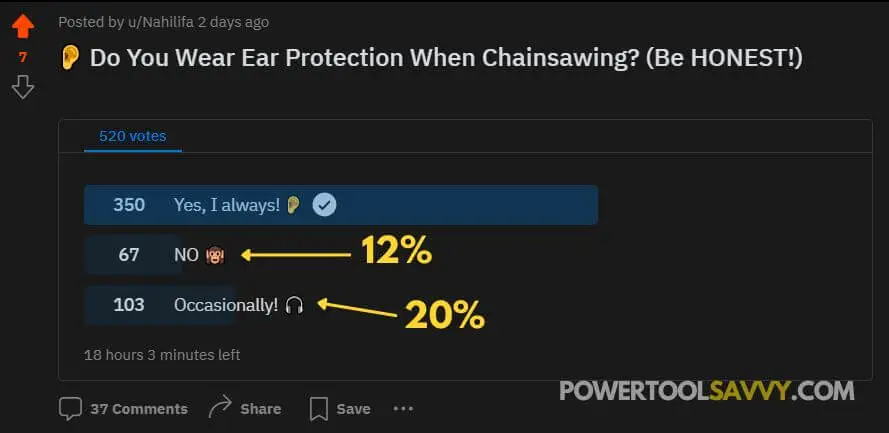
And chances are those people are slowly losing their hearing every time they fire up the saw. By the time they realize it, it could be too late! 🐸
I honestly have NO idea how on earth they run their saws without any sort of ear protection!
Sometimes I have to make a quick branch cut and I feel lazy walking back inside to grab my ear muffs for this 10-second job, but my ears are ringing afterward.
Meet one of our community members who’s now paying the price for not wearing hearing protection when he was younger: 👇
“I never wore ear or eye protection when I was younger. I have been in the trades around loud power tools and tree work around chippers, chainsaws, and blowers for about 15 years combined.
I am 33 (now) and I have a constant ringing in my ears (known as tinnitus). I wish I had started wearing ear protection sooner….” (Check the full story here!)
I feel SORRY for this guy, and want to ensure that others don’t have to go through the same ordeal.
So, cover those ears, mate!
Don’t let that chainsaw’s roar turn you into a temporary deaf DJ. Grab yourself some good ol’ earmuffs or earplugs before you rev up that beast.
What Hearing Protection to Use While Chainsawing?
When it comes to protecting your precious ears, it’s BEST to go with the tried and true methods: earmuffs or earplugs.
Earmuffs
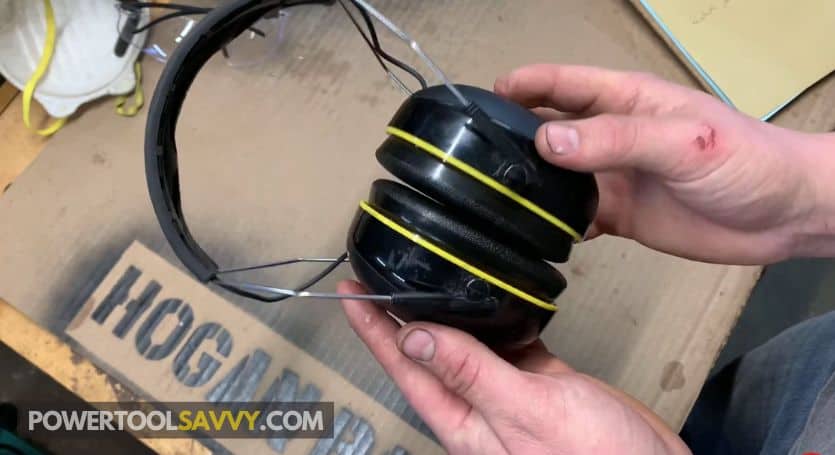
These bad boys are like cozy little blankets for your ears. They come in a variety of sizes, colors, and noise reduction ratings (NRR).
When selecting the right pair, you should aim for an NRR of at least 24. That ought to give you enough protection while still allowing you to hear the important sounds around you.
Here’s a list of my top picks for the best chainsaw earmuffs. 👇 (Not Sponsored, btw)
| Earmuff Model | NRR | Price |
|---|---|---|
| DECIBEL DEFENSE Professional Safety Ear Muffs | 37 dB | Check Price |
| 3M WorkTunes Connect Hearing Protector | 24 dB | Check Price |
| 3M Peltor X2A Over-the-Head Ear Muffs | 24 dB | Check Price |
If you’ve got a few extra bucks 💸, I would recommend getting a helmet that has built-in earmuffs. It’s like double the protection!

Earplugs
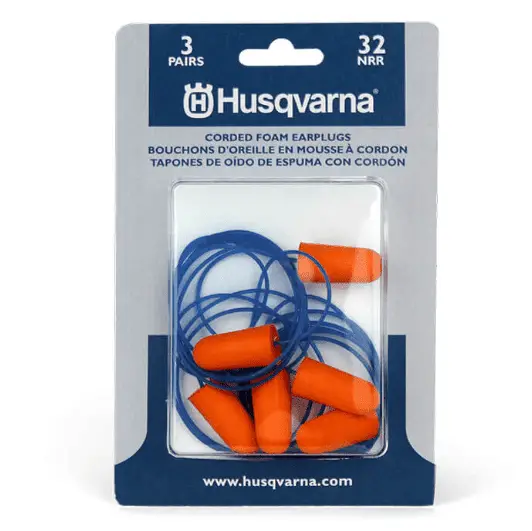
Earplugs are small, discreet, and mighty effective in blocking out noise. (Don’t underestimate the power of these little heroes!)
They fit snugly into your ear canal 👂, creating a barrier against those sound waves.
Plus, they’re portable, so you can stash them in your pocket and be ready to rock ‘n’ roll anytime.
If you don’t feel like carrying bulky earmuffs, these are the way to go.
Here’s a roundup of some of the best earplugs for chainsawing: 👇 (Again NOT Sponsored!)
| Earmuff Model | NRR | Price |
|---|---|---|
| Mack's Ultra Soft Foam Earplugs | 30 dB | Check Price |
| Ear Buddy Premium Soft Foam Ear Plugs | 32 dB | Check Price |
| SureFire EP4 Sonic Defenders Plus filtered Earplugs | 24 dB | Check Price |
| Honeywell Quiet Band Foam Earplugs | 25 dB | Check Price |
How Can You Measure the Noise Level of Your Chainsaw?
If you’re curious about the noise level of your chainsaw, you can always measure it yourself.
Here are 2 easy methods to do just that: 👇
Smartphone Apps
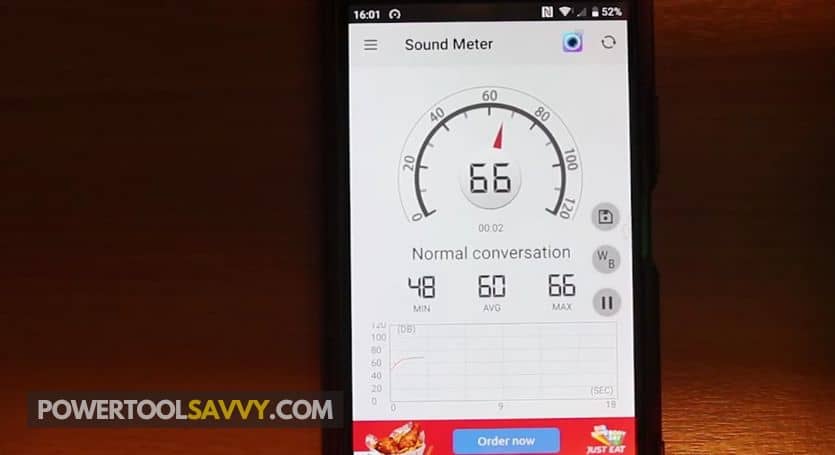
There are numerous sound meter apps available for both iOS and Android devices 📱.
These apps utilize your phone’s microphone to measure sound levels and provide you with real-time readings.
Open your Play Store or App Store and type “sound meter” in the search bar. Download and install any app that you like.
NIOSH also offers a free noise meter app. Check this out here!
Sound Level Meter Devices
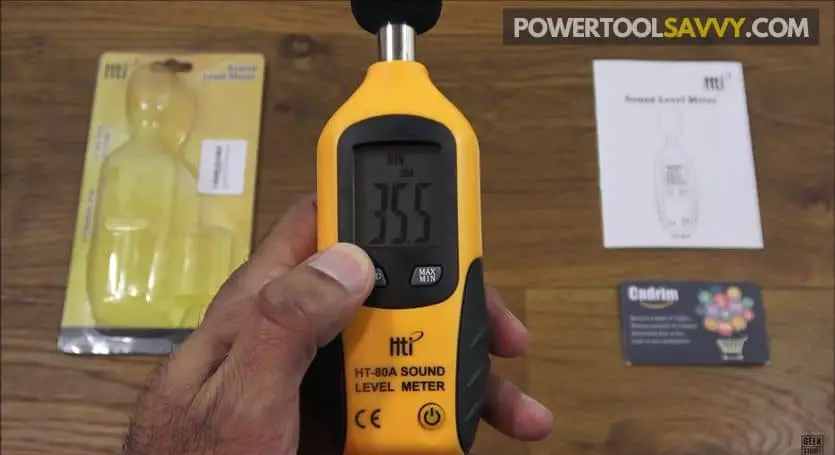
If you’re looking for a more dedicated approach, you can purchase a portable sound level meter device.
These handy gadgets are specifically designed to measure sound levels accurately. They come with a digital display and provide precise readings in decibels (dB).
But keep in mind that these devices are NOT FREE like smartphone apps 😞. They usually range between $20 and $50.
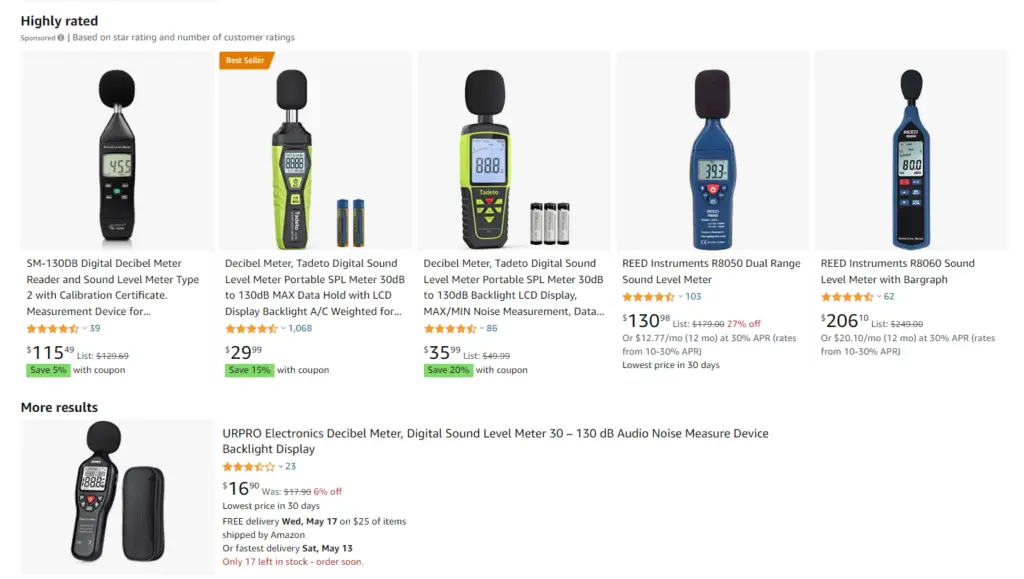
GoodBye Words! 👋
Alright, folks, it’s time to wrap up this noise-filled adventure!
We’ve journeyed through chainsaw decibel levels, learned the importance of protecting our precious ears, and even dabbled in the ART of sound measurement.
Share this article with your rebel friend who doesn’t believe in ear protection while chainsawing, and help spread the message of SAFE sound! ❤️🙂
Happy sawing!


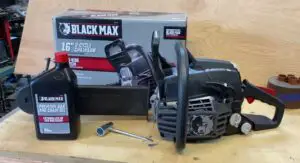
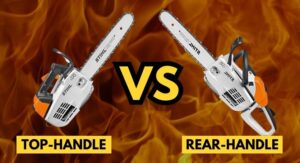
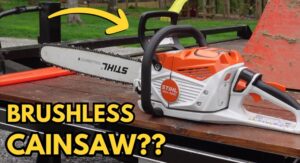

Pingback: Are Chainsaws 2-Stroke? (What You Need to Know!)